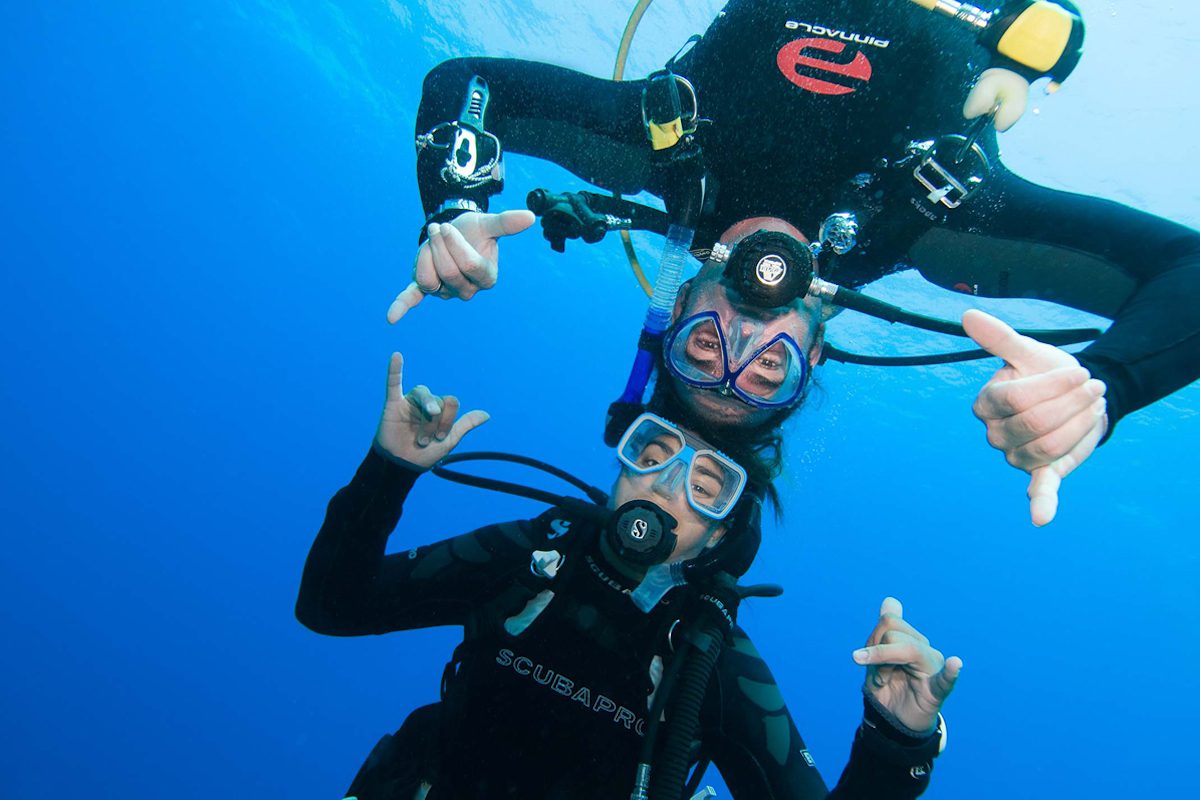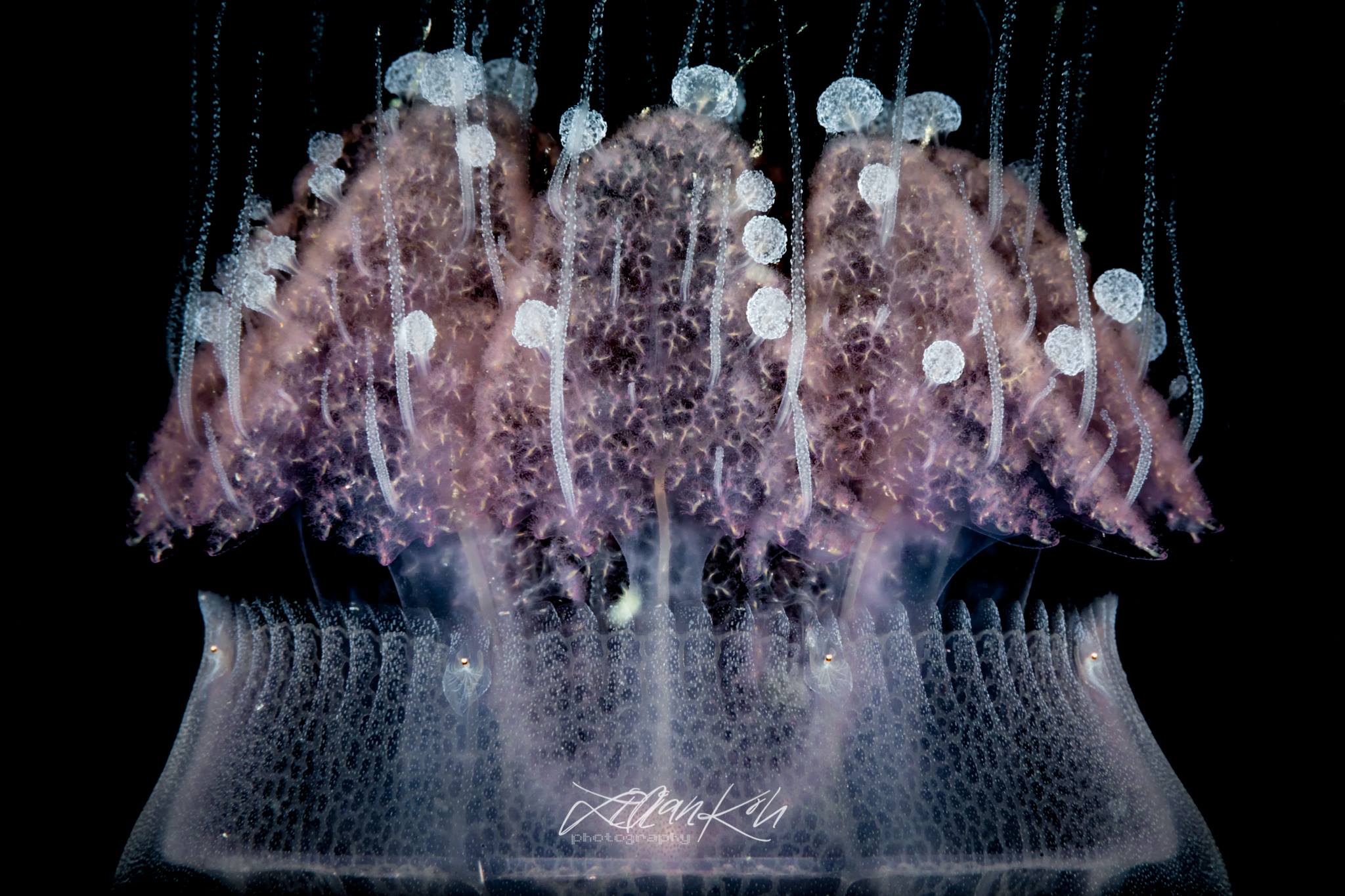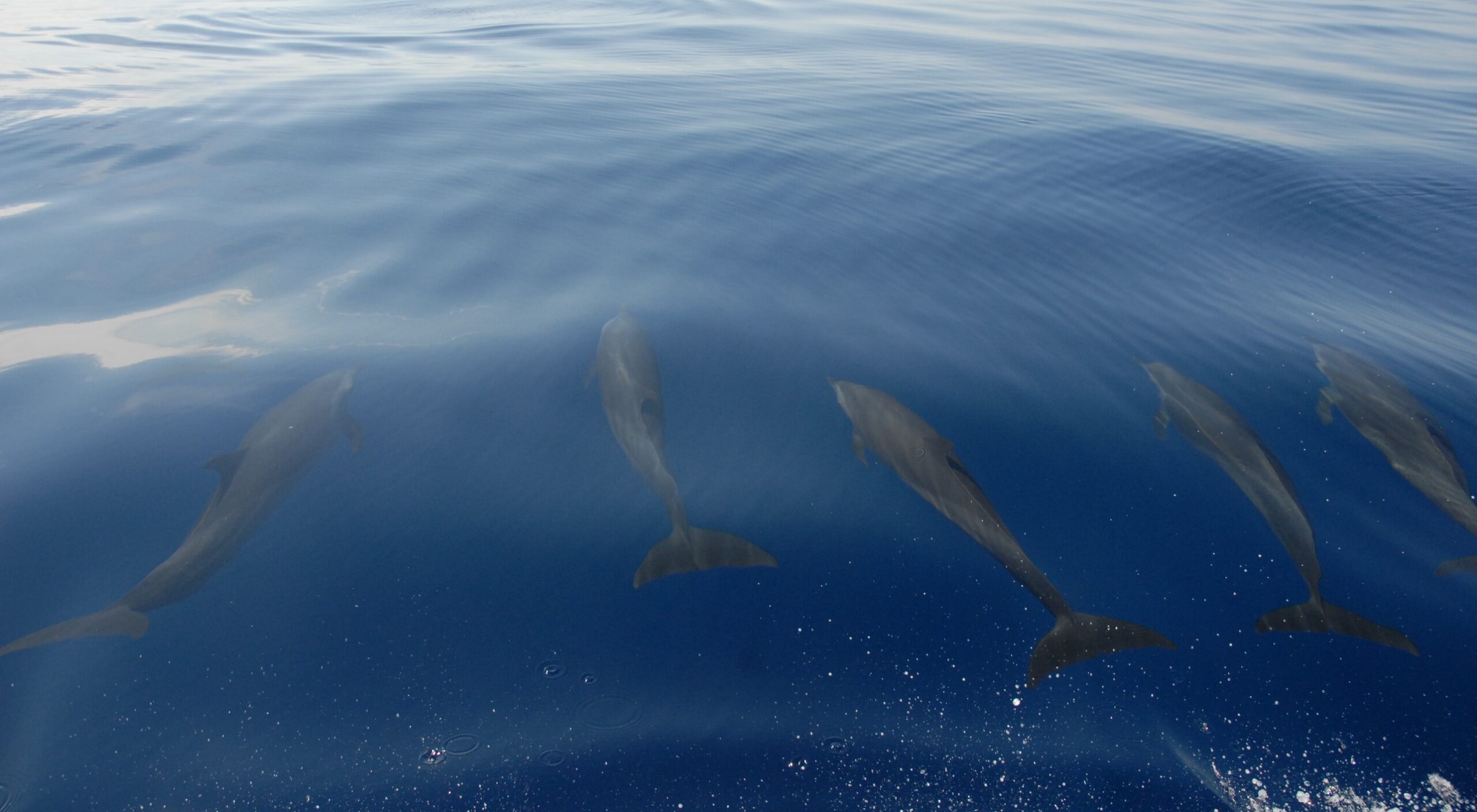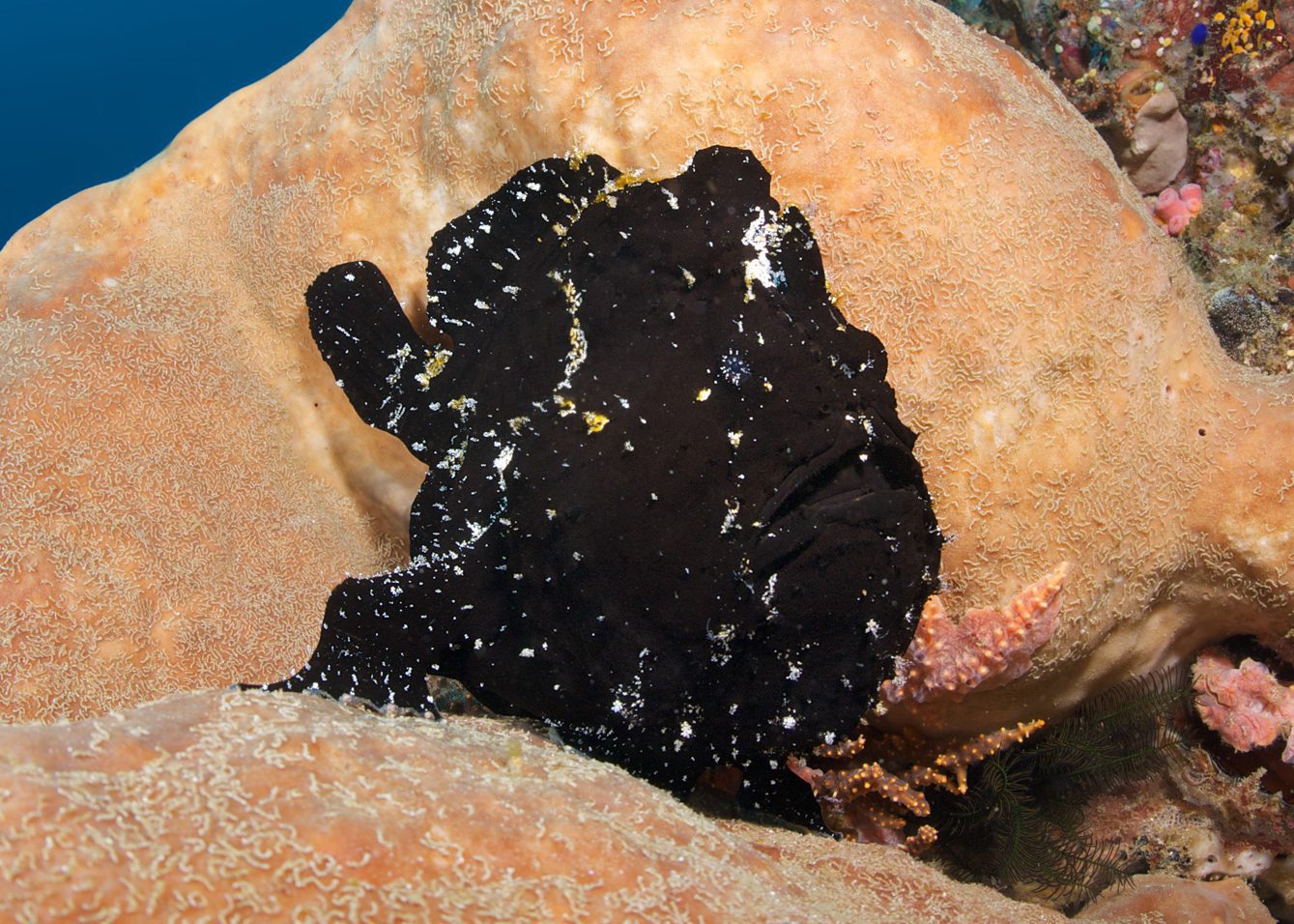
Exploring the Stealthy Hunting Habits of Black Frogfish
Frogfish are known for their impressive camouflage abilities and have been referred to as masters of mimicry. Despite their stocky bodies, they are also one of the most aggressive ambush predators in the ocean and they can strike with lightning-fast speed. In this article, we take a look at the black frogfish in more detail…
Black Frogfish Defined
It’s important to note that the term ‘black frogfish’ literally refers to a frogfish that is displaying black coloration – it is not a species. There are many species of frogfish and virtually all of them are able to change their coloration to match their surroundings. It is this characteristic that enables frogfish to be such good hunters. They are able to blend in so perfectly with their backgrounds that they can literally ‘hide in plain sight’ and be ready to strike at any time!
Frogfishes of North Sulawesi
We are extremely fortunate that here in North Sulawesi we have so many different species of frogfish that are capable of color transformations:
- Painted Frogfish (Antennarius pictus)
- Giant Frogfish (Antennarius commerson)
- Warty Frogfish (Antennarius maculatus) and Clown Frogfish (Antennarius maculatus – Juvenile)
- Hairy Frogfish (Antennarius striatus)
- Hispid Frogfish (Antennarius hispidus)
- Ocellated Frogfish (Antennarius sp.)
- Randall’s Frogfish (Antennarius randalli)
- Sargassum Frogfish (Histrio histrio)
- Freckled Frogfish or Scarlet Frogfish (Antennatus coccineus)
Black Frogfish and Camouflage
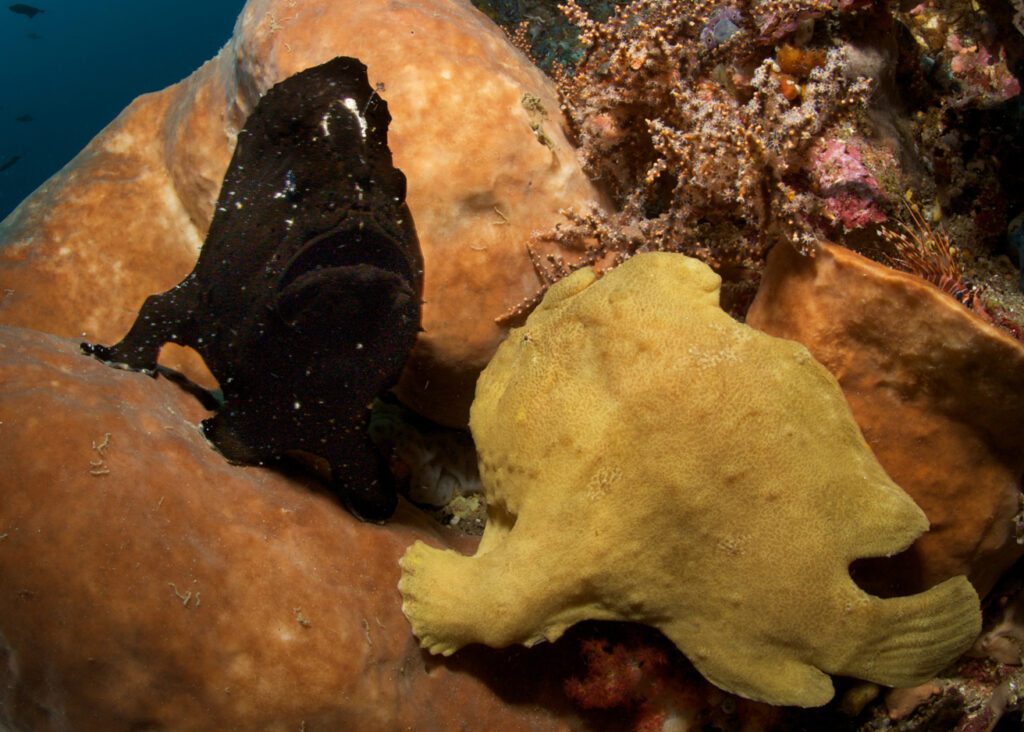
Frogfish colorations are highly variable and many species will change through a rainbow of colors during their lifespan. Some of the colors we see here in North Sulawesi include black, tan, bright orange, yellow, green, white, and anywhere in between!
One of the reasons we believe that we tend to see a large number of frogfish in a black coloration stage is most likely due to them being spotted on our black sand muck diving sites which are found in Manado Bay and the Lembeh Strait.
Frogfish Hunting Habits: An ambush predator
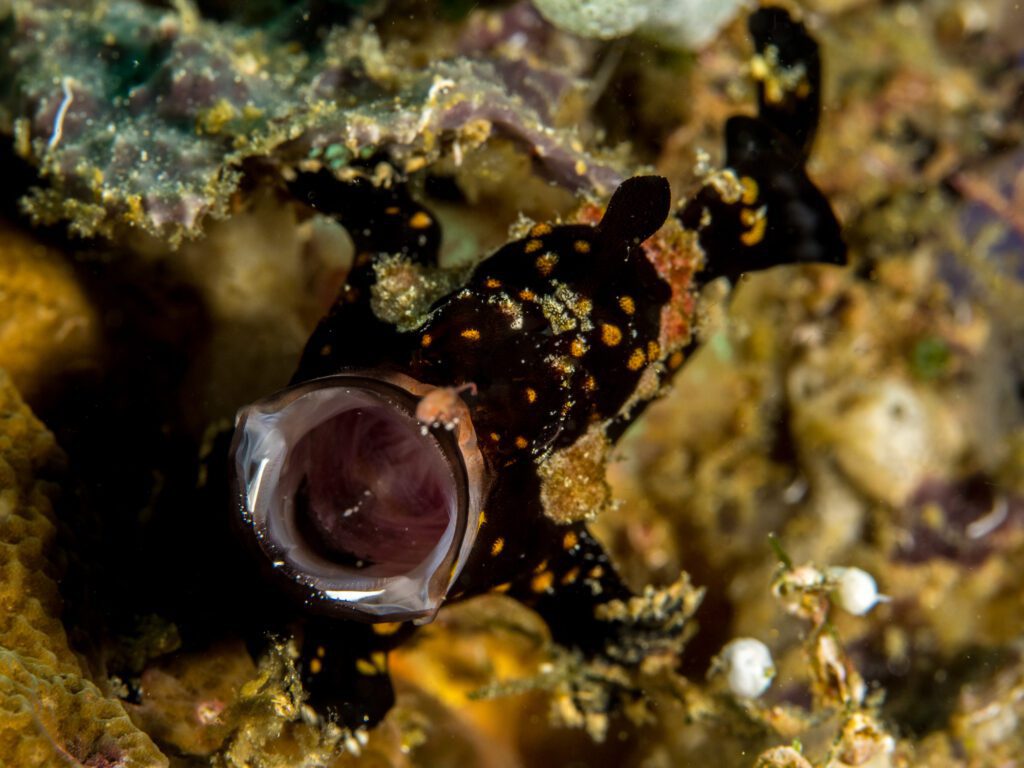
Black Frog Fish Camouflage
Frogfish are prolific hunters who use an arsenal of abilities to ensure they successfully capture their prey. Their hunting toolkit includes camouflage and mimicry, lures (called escae), an ability to strike using jet propulsion. Additionally, they are known for the fastest feeding attack among vertebrates (see feeding information below).
Frogfish are not active hunters, they rely on their camouflage to disguise themselves and remain stationary. They are also known as anglerfish because they have head appendages with lures – similar to fishing rods. Frogfish dangle their lures to entice prey to approach. When possible prey approaches they will wait until they are within striking distance before launching their ambush.
Did you know that different species of frogfish have different shaped lures? These range from lures that resemble shrimps, other fishes, and worms, to juvenile squids.
Frogfish Feeding
Frogfish are carnivores and primarily feed on other fish but are also known to devour crustaceans and cephalopods. When a frogfish strikes, it opens its jaws and is able to expand its mouth cavity to up to 12 times its original volume. The frogfish will then suck in its prey – whole. The entire attack has been recorded as taking up to just 6 milliseconds. Frogfish can also expand their stomachs which gives them the capability to swallow prey that is up to twice their own size!
How do Frogfish Swim?
Unlike other fish, frogfish do not have a swim bladder. Swim bladders are the part of a fish that gives them the ability to be neutrally buoyant and swim with ease underwater. Frogfish are most commonly seen ‘walking’ or ‘jumping’ on the ocean floor and they can use a form of jet propulsion to help them get around. The frogfish will gulp vast amounts of water which they push out through their gills with such force that it propels them forward.
Reproduction
There are two types of frogfish reproduction. One type involves the female producing a small number of larger eggs that are attached to her body until ready to hatch. The second type involves the more common method of spawning. During spawning, the female spawns a much larger amount of smaller eggs that immediately float away in the water column and will drift with currents.
Where to see Frogfish in North Sulawesi

It’s possible to spot various species of frogfish at all of our dive sites around Manado, Bunaken, Bangka, and Lembeh. A few of our favorites include Peter’s Sponge in Bangka, Circus and Bethlehem in Manado, and Rojos in Lembeh.
Dive and Stay with Us!
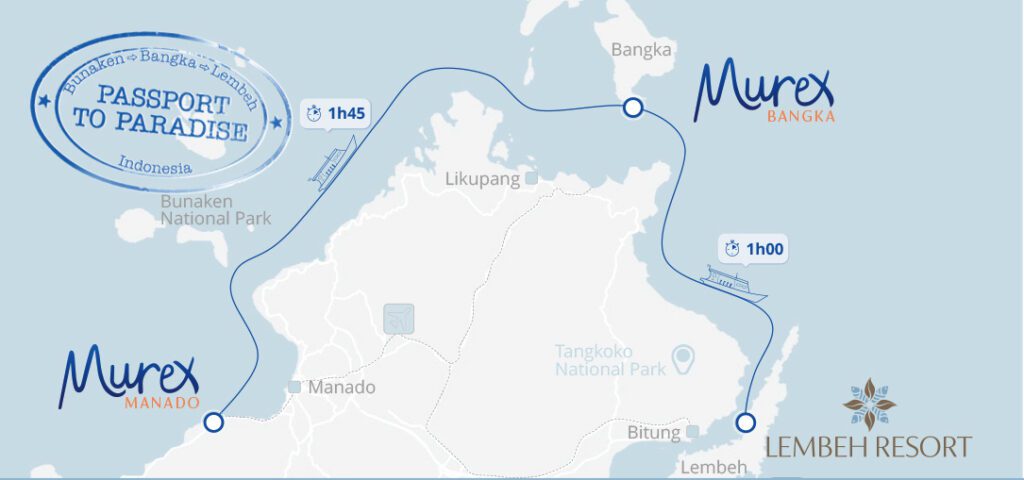
Three distinct destinations brought together by Passport to Paradise
Why limit yourself to one destination North Sulawesi when you can visit all three? Join us for a Passport to Paradise and explore our three distinct diving destinations in one easy trip: Bunaken, Bangka , and Lembeh.
Our resorts are connected by boat diving transfers which means no wasted travel time and even more time underwater as you simply dive your way from resort to resort!
Are you ready to book your next diving adventure? Contact us at reservations@murexresorts.com. Check out Murex Resort rates and reserve your spot now.
Further Reading
If you enjoyed reading this article, you may also be interested in some of the following…


